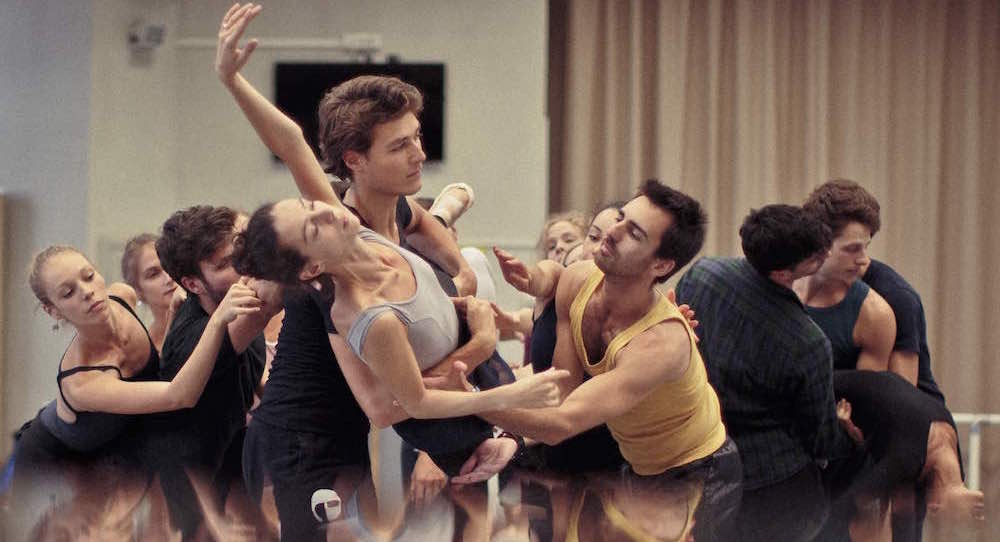Directors: Thierry Demazière and Alban Teurlai.
A film – 122 minutes.
A day-to-day view of a dance creation amidst institutional change.
Relève is a documentary that follows the creative process at the world renowned Paris Opera Ballet. The impetus for the film is the arrival of the new Director of Dance, Benjamin Millepied, who takes the “baton” or, in French, the “relève” from Brigitte Lefevre, who retires from the position after 20 years.

The choice of Millepied, with his relative youth and contemporary vision, is an audacious one, and would indicate that the Paris Opera Ballet is looking for a more modern and international direction with revived freshness and vitality.
With his previous stints at New York City Ballet and his own L.A. Dance Project, Millepied is certain to blow away the cobwebs in the iconic Paris Opera Ballet.
The film delivers a fascinating ground-level view into more than just the creative process, as Millepied mounts his first production as Director of Dance. Running parallel with the creative struggles is his struggle to change the culture of this venerated institution where an artistic creation is not immune to the weight of history, along with the politics of company management and corporate governance.
Millepied has clear ideas about the direction he envisions for the Paris Opera Ballet: an engagement with the wider culture, collaborative and scientifically and technologically up-to-date. In many ways, the film casts Millepied as a great disruptor in the dance world.
From the opening scene with Millepied listening for the first time to the commissioned score, Énorme! Fantastique!, to his final words to the dancers before the curtains open on his first season as Director of Dance, this man is striking for his energy and affinity with movement.
He has 39 days to create the work.
Much of the contrast between ancient and the modern can be seen in the juxtaposition of opulence in some studios – think gold, ornate, chandeliers, fresco-lined walls, against the lone dancer, in an old grey t-shirt, track pants and headphones, losing himself in the first experimental steps of the new work.
Millepied strives for a more dancer-centric vision of the company. One of his first initiatives is to replace the flooring in all dance studios, which he considers too hard for dancers.

As his long-time friend, Dimitri Chamblas explains, “Benjamin does not conform to the traditional French stereotype [of Artistic Director]. He jokes around and laughs, he goes jogging, he dances in the studio, and when he shows something to the dancers, he dances with them; he doesn’t direct with distance. It’s important that he keeps this freshness.’
Artistically, this dancer-centric vision is seen through his choice to work with 16 dancers from the corps de ballet, the first rung in the hierarchy. “They are the heart of the company,” he says, “and they have the desire to make this happen.”
We see the struggle to maintain momentum as a national strike of workers in the arts industry takes hold, affecting resources available for Millepied’s rehearsals. Nevertheless, the work unfolds. “If we can produce one minute of choreography each day, we’ll make the deadline,” he says. And the dancers are there in solidarity, relishing a newfound freedom in the way they dance.
He questions the role of the annual “concours”, or re-audition required of each dancer, which the company uses to “maintain standards” within the company. Millepied sees it as a form of bureaucratic control that instils fear and stifles the performing instinct.
“When I first arrived and met with the dancers, there were some who were trembling when I spoke with them, others who could barely speak at all,” he recalls. “I find it difficult to understand this system. They have a huge fear of the hierarchy.”
For Millepied, “ballet is fundamentally rhythm, musicality and pleasure. You don’t learn technique and then learn to dance; you dance first to express your emotions. In dance, there is everything: the sensation of space, of time and of exploring emotions through movement.”
He realises a number of other “firsts”, including a creative online space called the 3ème (3rd) scène; where artists of the ballet are invited to create and record their own works.
Millepied envisions a culturally diverse company, one that is open to the world’s diversity. In the midst of producing his work for the gala, he casts a non-white dancer in the principal role of a classical ballet – it is a “first” and follows his plan to have dancers of different nationalities on the stage.

“What is it exactly, this excellence of the Paris Opera Ballet?” he asks. “They live in such a bubble, believing they are the best, but they have no desire to look outside of themselves.”
Millepied gives candid interviews to journalists, whilst dealing with costume and lighting decisions. The tutus are discarded; we watch the interesting and comical challenge these light metal contraptions pose for both the girls and their partners. Millepied makes the call: “They’re too distracting; forget them.”
He calls in reinforcements from the U.S. to help with rehearsals and preparations.
The 25th September, 2015 arrives with the much anticipated premier of Clear, Loud, Bright, Forward. Millepied offers final words to his dancers: “Why do you live this métier ? Lose yourself in the pleasure of dancing, and allow everything to come together. We will see you.”
Post-script: Four months after the season opening Gala, Benjamin Millepied resigns from the position of Director of Dance at the Paris Opera Ballet. It was a brief but memorable moment.
By Elizabeth Ashley of Dance Informa.
Photos: Scenes from Relève.

















